As I sat poring over swell charts and surf forecast websites in the dark and dingy attic bedroom of my student flat in Aberdeen, rain and wind lashed the windows like the talons of Macbeth’s malicious witches. Water trickled down the wall; the bin bag duck-taped to the cracked ceiling wasn’t as effective a weather barrier as I’d hoped. You get used to storms when you live on Scotland’s wild north-east coast though: the one constant of the ever-changing weather is how fickle it is. It was working in my favour this time, though: after weeks of flats the North Atlantic wave buoys were finally showing signs of life – a swell charging towards shore like proverbial soldiers to battle. A west swell, with a swing of north to it… And winds forecast to drop. I grabbed the keys to my rusty, battered old Nissan Micra and turned off the flickering and dented desk lamp: it would be a long drive north to Thurso.
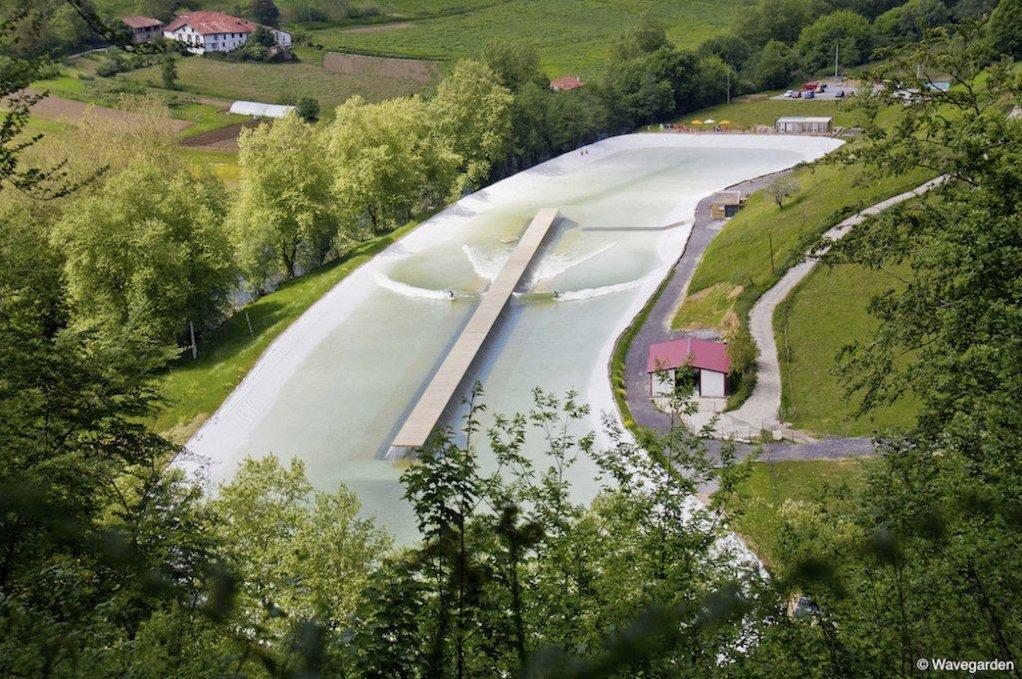
Faking it? Get The Lowdown on Artificial Waves
Real waves are a true force of nature
I slipped into the river mouth at silly o’clock the next morning, and drifted out into the lineup with the current. Waves thumped across the reef like some oceanic heartbeat, rhythmic as the pulse of a giant heart; I’d never felt more connected to nature than in that moment. As the sun pierced the morning sea-mist, I paddled into my first wave of the session, thrust my arm into the face as the lip pitched over, and stopped thinking.
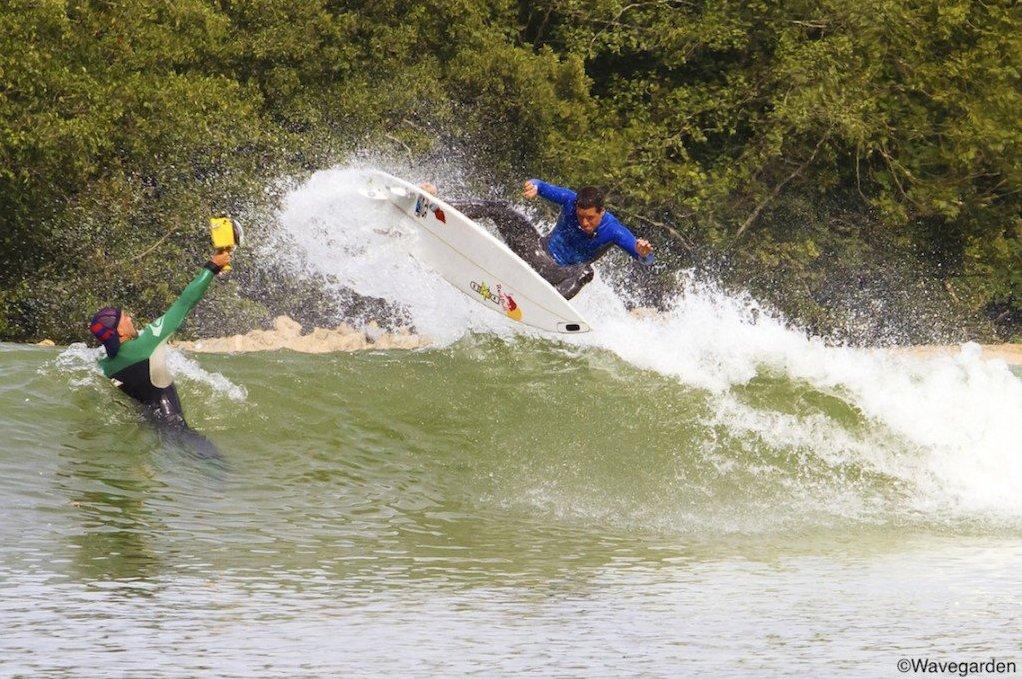
And that’s what drives us to surf: to wash away the mundane tediousness of modern life with cleansing seawater. Riding these lumps of liquid energy takes us back to a more primal state, drifting animal-like in the midst of a mind-blowingly vast liquid mass. It can do what it wants when it wants: give you the ride of your life, or snuff your life straight out – with total equanimity. It just doesn’t give a shit about us, and nothing else on the planet comes close to as humbling, or as thrilling, an experience.
How good can artificial waves be anyway?
Which brings us to the point: Why, then, are we trying to build artificial waves? Are we really arrogant enough to think that we can do better than Mother Nature? Yeah, we can probably shape a perfect wall of water, but that’s far from the whole story: where’s the scent of salt and seaweed on the air, the roar of water against rock, the cries of seabirds… The sheer feeling of being enveloped in energy and life? Can the experience ever match up to the real deal? The surf media has been buzzing with press releases about advances in wave generation technology and new plans for wave parks recently: magazine comment boxes are rife with controversy and the usual strong opinions about the impending reality of manufactured and perfectly manicured waves.
The answer is actually pretty simple though – why on Earth not? They may never replace or compare to the real thing, but there are many upsides. Wave parks are the ideal place to refine technique and perfect advanced manoeuvres. If surfing is going to continue it’s gravity-defying aerial progression, wave parks are likely to be at the forefront of the scene: the consistency of a totally predictable wave that breaks in exactly the same way every time allows un-paralleled opportunities to experiment. Critics consider this predictability a downside, but let me ask you this: would you waste a perfect liquid JBay ramp to try something mental (backflip, anyone?) that you 99.99% won’t stick? No? Well how about in a wave pool, when you know the next wave will be just as good? I thought so.
Moving down from the cutting edge of the sport, artificial waves still bring nothing but positives. Are work and family conspiring to keep you from the beach at the right tide, or – gasp – living inland so you can’t make the swell? No worries, just head to the pool for a floodlight session after work. It may not be quite as good as the real thing, but at least it’ll keep your skills sharp for when the stars finally align on your day off!
How Does The Technology Work?
Early wave machines worked by a combination of pumping water into special chambers, then using compressed air to force it rapidly back into a pool. The system works well, and can generate surprisingly shreddable 4 foot+ waves, as at Wadi Adventure Park in the UAE. The main advantages of this sort of system is that it can be controlled very precisely, and that most of the machinery is in dry rooms so it’s easy to access and repair. However, it also has some big flaws: the pumps require a LOT of energy so they’re expensive to run, and as the system needs to re-capture and pump water after every cycle, there is a long (90 second) wait between waves.
Newer designs like Wavegarden are totally different: a sledge-like hydrofoil is dragged along a central track at the bottom of a pool, underneath a pier-like construction. As the foil runs along its track, it builds waves that then bend off the pier, simultaneously forming a left and right hander. At the end of the track, the foil simply rotates 180° and runs in the opposite direction, generating a further two waves. This more elegant solution is more appealing to both surfers and investors: the more efficient design uses less energy and produces more waves, which means that despite lower operational costs more people can use it per session, hopefully result in lower entrance costs.
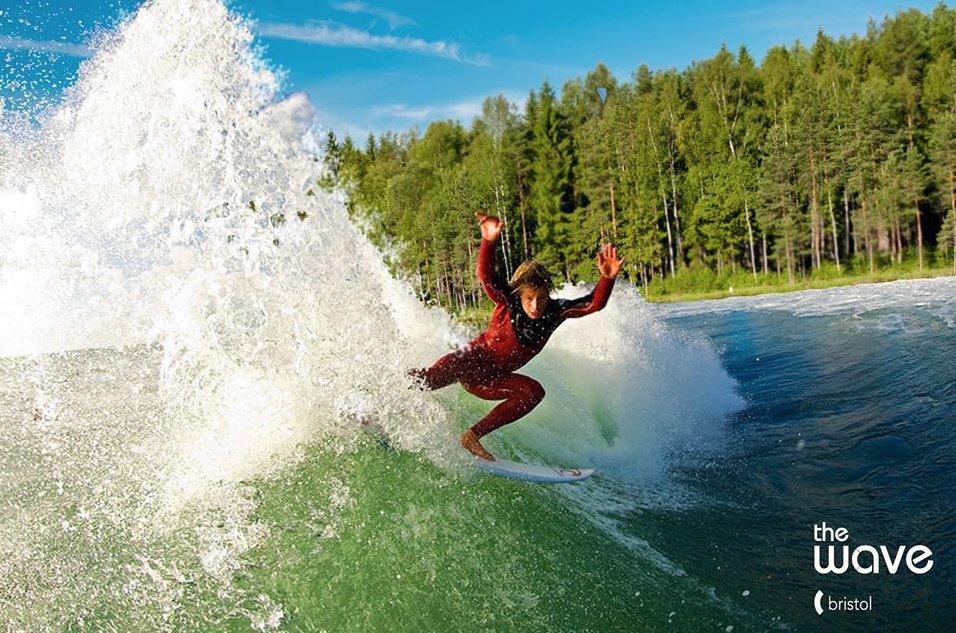
Wavegarden aren’t the only players in the game, though: Webber Wave Pools and the Kelly Slater Wave Company have also come up with new ideas and technology, however as yet those concepts remain theoretical, or as lab-based models. Wavegarden, on the other hand, have a fully operational demonstration pool in the Basque country. Due to the amount of land they had available to build the lagoon, the size and power of the waves is still limited, though a 22 second ride on a 4.25 foot wave is all the proof we need to start getting excited about the prospect! While this test site will never be open to the public, several pro surfers like world champ Gabriel Medina have been invited to try it, and came away singing it’s praises: “I thought it was going to be smaller. It’s actually really big!” — Dusty Payne. Given that the size of the waves is only limited by the size of the lagoon, it is expected that commercial versions are likely to be even bigger and more powerful – though Wavegarden suggest that anything above 2 metres face height would require too much energy to be economically viable.
Wavegarden’s technology isn’t only for experienced surfers though: as waves roll through, they run into special bays and crumble into whitewater – perfect for surf schools and beginners to practice on. It’s also ideal for kids, who’ll have a safe place to surf after school where parents won’t have to worry about riptides and other marine dangers.
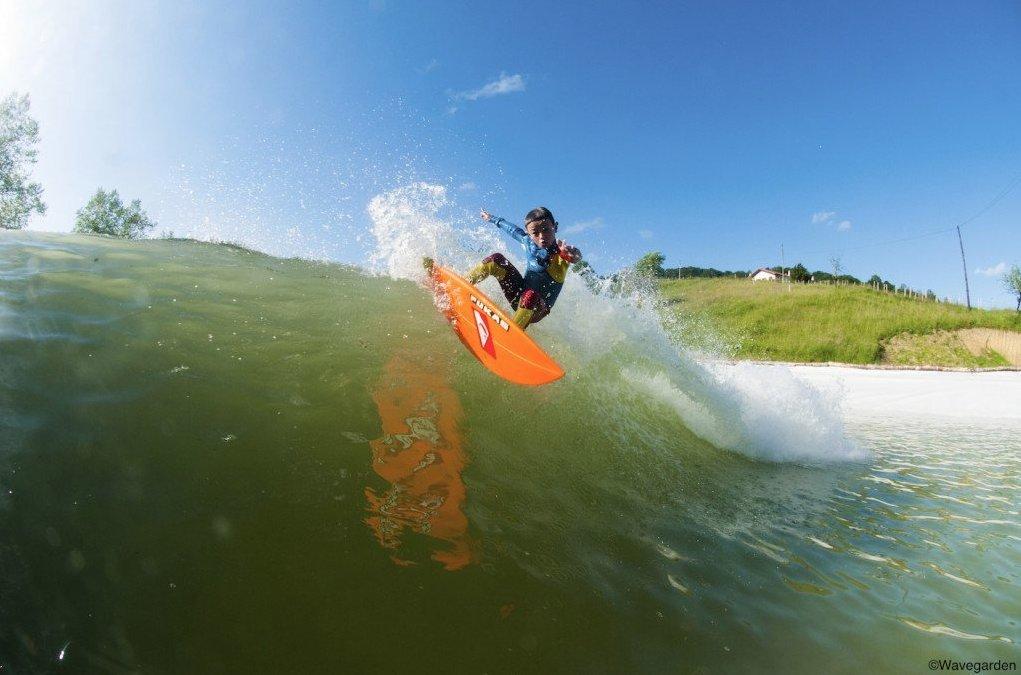
They Can’t Be Great For The Environment, Though?
Waves are an energy transport phenomenon, so obviously generating them requires an energy input. Given the huge abundance of natural waves around the world, it does seem slightly wasteful to then create them ourselves. However, when you consider that by far the biggest portion of most surfers’ carbon footprint stems from travelling, it starts to make a little more sense. Wavegarden have calculated that if you drive an SUV (alone), spend at least 1.5 hours in the water, and live at least 15 minutes closer to the surf park than the beach, then your carbon emissions will be lower surfing in the pool than in the ocean.
Those calculations only include the energy required to generate the waves though, and not the impact of actually building the park. However this needn’t be quite as bad as you might at first think: the vast majority of the work required is just to dig and shape the lagoon. Little concrete is needed, and thus it’s possible that, given a long lifespan, a surf park could work out relatively carbon neutral in the long term.
How Will It Affect Surf Culture?
One oft repeated criticism of surf parks – usually voiced by coast-based surfers – is the dilution of surf culture by bringing it inland, and the potential chaos in the lineup if hordes of un-educated landlubber surfers later flock to the ocean with no knowledge of marine dangers and etiquette. Many of us like to feel that we belong to some kind of special tribe, dedicated to the ocean and the act of surfing; cleansing ourselves in its waters as we ride waves, like a religious rite. Will taking surfing inland affect that elevated status?
Er, no. While we might like to think of surfing as some mystical and primordial connection with nature – and it still can be! – the reality is that the commercial world stole much of its soul a long time ago. In any of the warmer parts of the world kids hang out in board shorts, flip-flops, and beaded necklaces all summer, while Quiksilver have flagship stores in most major cities across the globe, including London and New York. Videos and images of surfing are used to sell everything from aftershave to photocopier ink cartridges, and surf music has made its way into several iconic films, like Dr. No and Pulp Fiction.
In fact bringing surfing inland is likely to do the exact opposite of diluting the culture – it will give those who identify with the culture the opportunity to actually participate in the sport and actively engage with the lifestyle. Surfing can have a massive positive impact on people’s lives, and be an incredible vehicle for social improvement; why not use it to make the world a better place? How can that possibly be a bad thing?
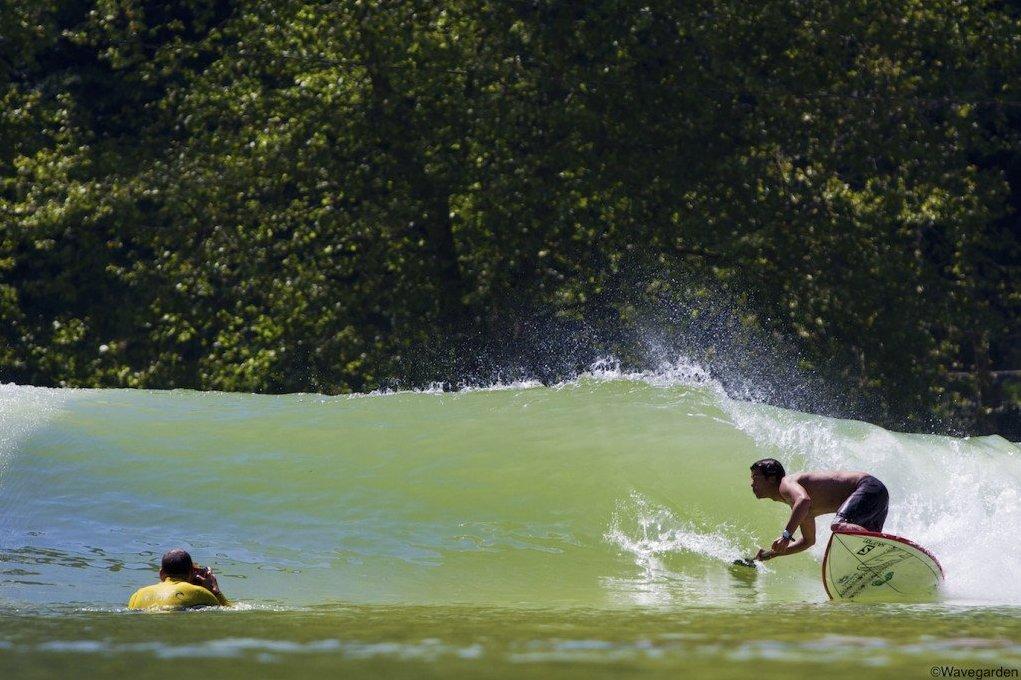
Artificial waves and inland training venues could also open up the competition scene to many more people. The idea may seem risible, but in fact it’s not so unusual: Jenny Jones learnt to snowboard on a dry ski slope in the UK, and went on win a bronze medal in the Sochi Olympics; Joe Morley, double Extreme Kayak World Champ at the Adidas Sickline race in Austria, learnt to kayak on artificial whitewater slalom courses.
The ability to precisely control waves could also hugely improve competition formats themselves, too. Long waits between sets put off mainstream audiences and long swell windows discourage TV broadcasters: event timings are simply too unpredictable to schedule live coverage. This unpredictably also hinders surfing’s rise to an Olympic discipline, and all the funding – grass-roots as well as pro and corporate-level – that goes with it. Artificial whitewater courses are routinely built for Olympic kayak slalom events (and London’s Lee Valley course is thriving as a public rafting facility long after the games) so why shouldn’t surfing – a larger and more popular sport – benefit similarly?
Where Can I Try An Artificial Wave?
At present – unless you can wangle an invite to Wavegarden’s Basque demo site – you’re restricted to the old style hydraulic pump systems. Wadi Adventure Park in the UAE is one of the leading options, and you can choose from various set-ups amongst their surprisingly rippable 4-foot waves, including lefts, rights, A-frames and closeouts. The waves are good enough to attract several comps, including the SUP World Tour. Disney’s Typhoon lagoon has also been the scene of many competitions and some impressively progressive surfing, while Siam Water Park in Tenerife boasts the largest artificial waves to date – up to 3 metres face height! Unfortunately entrance to all these parks is expensive, and you’ll have a long wait between waves.
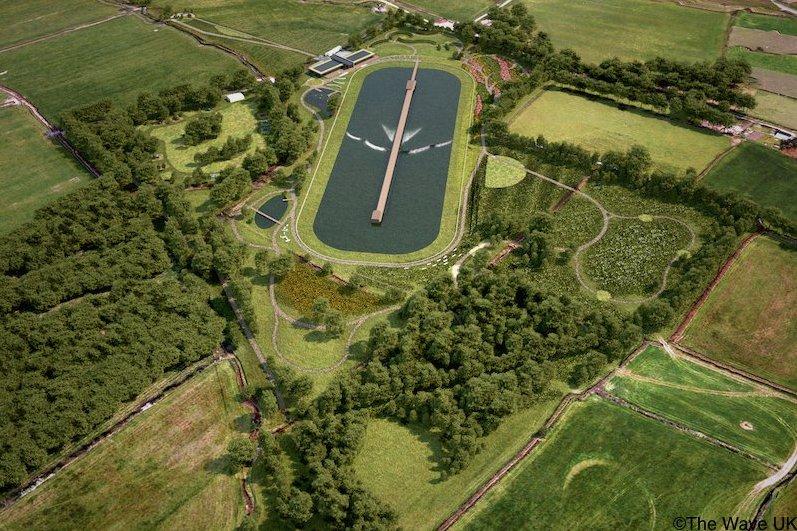
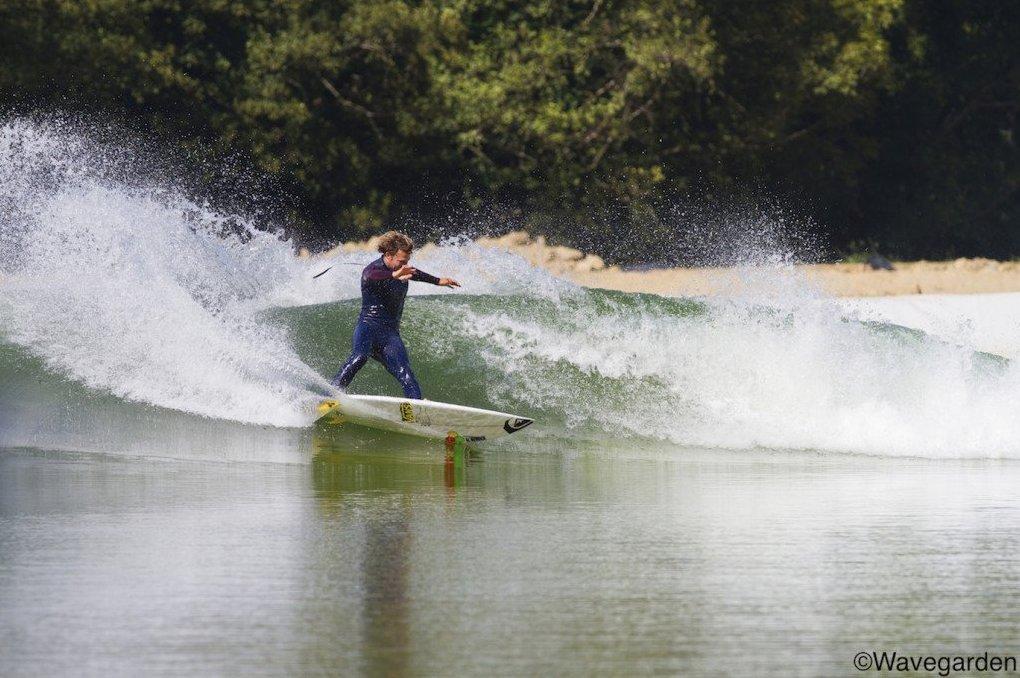
The first of the new school parks are on their way though, and UK surfers in particular don’t have long to wait. Building work has already started at Surf Snowdonia in Wales’s Conwy Valley; they aim to open early July 2015, using Wavegarden technology. The Wave UK have also been granted permission to build a Wavegarden-based surf park near Bristol. They’ve just completed a successful crowdfunding campaign to help meet their sustainability and community work targets, and building is scheduled to start in early 2015.
It’s not just the UK, however: further projects are slated for Rotterdam in the Netherlands; Varberg, Sweden; Montreal, Canada; Queenstown, New Zealand; Sochi, Russia; Oahu, Hawaii and Helsinki, Finland.
Which brings us to the million dollar question: if a wave park comes to your town, will you surf it?